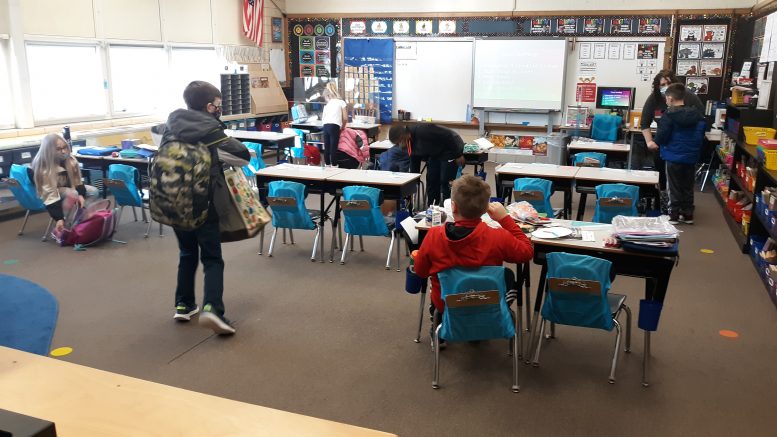BY SUSAN TEBBEN
Math and reading proficiency scores in Ohio, along with the nation, are trending downward, according to data collected as part of a national assessment of student data.
Assessments done as part of the so-called “nation’s report card” were administered between January and March of this year, covering more than 224,000 fourth-graders and more than 222,000 eighth graders nationwide.
The National Center for Education Statistics services as the “statistical center for the U.S. Department of Education, and works under a congressional mandate to “collect, collate, analyze and report complete statistic on the condition of American education,” according to the newest report.
“The national average score declines in mathematics for fourth and eighth-graders were the largest ever recorded in that subject,” the National Center for Education Statistics announced in a press release.
Ohio was one of 43 states (and Washington D.C.) to see decreases in fourth-grade mathematics scores, one of 51 to see decreases in eighth-grade math. In fourth-grade reading, the state was one of 30 to see decreases, and one of 33 in the nation to see lesser scores in grade 8 reading.
In snapshots of Ohio reading and mathematics scores for grade 4 and grade 8 students, the state showed a decrease in both areas.
Using a sample of student scores, eighth grade math proficiency went from 38% in 2019 to 29% this year. In reading scores for the same grade level, proficiency went from 38% in 2019 to 33% this year, according to the NAEP data.
Fourth graders saw decreases as well, going from 38% in 2019 to 33% in 2022 in reading scores, and from 38% in 2019 to 29% this year in math.
The new scores show “an alarming trend in Ohio and across the country – that our students are falling behind in math and literacy,” according to Lisa Gray, president of Ohio Excels, which partners with business leaders to promote education.
“None of this should be surprising, and these findings reinforce the need for immediate public policy interventions to help Ohio schoolchildren make up for lost learning.”
The NAEP report also looked at teacher confidence and how the pandemic affected student learning experiences, and found “higher percentages of higher-performing students…had access to key educational resources than lower-performing students during remote learning in the 2020-21 school year.”
Nationally, the assessment found the most widespread declines in eighth-grade mathematics, but saw decreases throughout the assessment.
“A majority of states saw lower scores, on average, across grades and subjects since 2019,” a press release announcing the data.
That included access to computers or tablets, a quiet place to work, a teacher available for school work at least once or twice a week and real-time video lessons for eighth-graders “every day or almost every day,” according to the report.
When it came to teacher confidence during remote learning, the report found half of teachers reported in the study felt “‘quite’ or ‘extremely’ confident in their ability to address learning gaps.”
The report comes as the Ohio Education Association recently pushed the Ohio Senate to take up House Bill 497, a bill that would eliminate retention of third graders, even if they don’t prove proficient in state standardized tests.
More headlines from Ohio Capital Journal:

